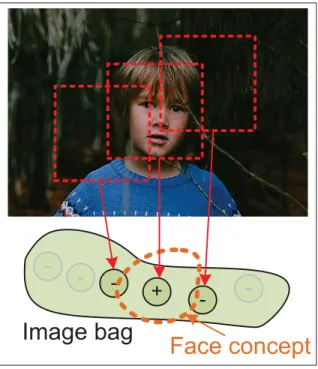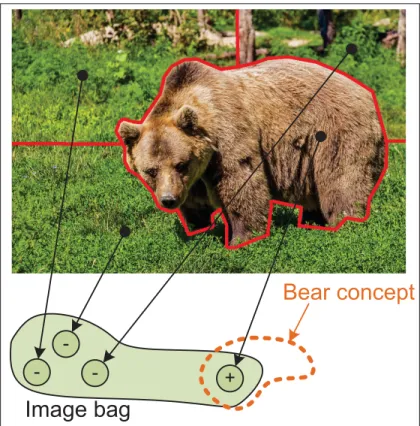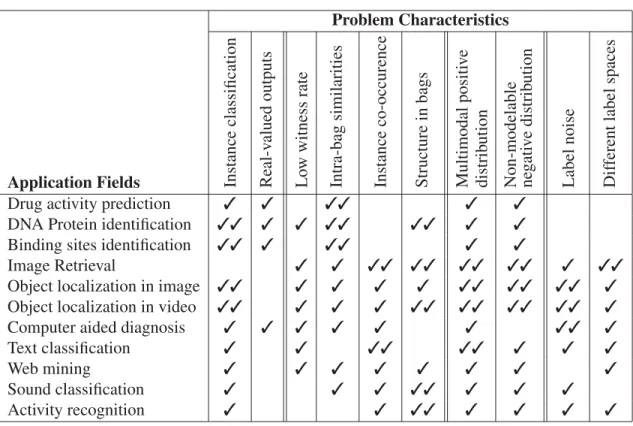2017 — Multiple instance learning under real-world conditions
Texte intégral
Figure




Documents relatifs
The high presence of common and atypical nevi on the body surface constitutes a potential risk factor for the onset of melanoma and characterizes the current debate on Dysplastic
After an overview on most relevant methods for image classification, we focus on a recently proposed Multiple Instance Learning (MIL) approach, suitable for image
Dans cette section, nous présentons d’abord l’approche naïve pour traiter le problème de l’apprentissage MI pour les séquences ayant des relations à travers les sacs..
For each sequence of the unknown bag, a discriminative classifier is applied in order to compute a partial classification result.. Then, an aggregation method is applied in
In the Machine learning module, k most similar rec- ords to the input are retrieved from the Knowledge Base, which contains training data ; then, IPC codes assigned to these
Figure 1: Relational Learning: Phase transition of the covering test, and failure region of the FOIL algorithm in plane (m, L), where m stands for the number of predicates in
Secondly, the LPP framework has been used to demonstrate the existence of a phase transition phenomenon for standard MI-SVM kernels; further, the LPP unsatisfiable region corresponds
In comparison with strong (i.e., fully-labeled) supervised learning where every training instance assigned with a discrete or real-valued label, the rationale of MIL paradigm is





